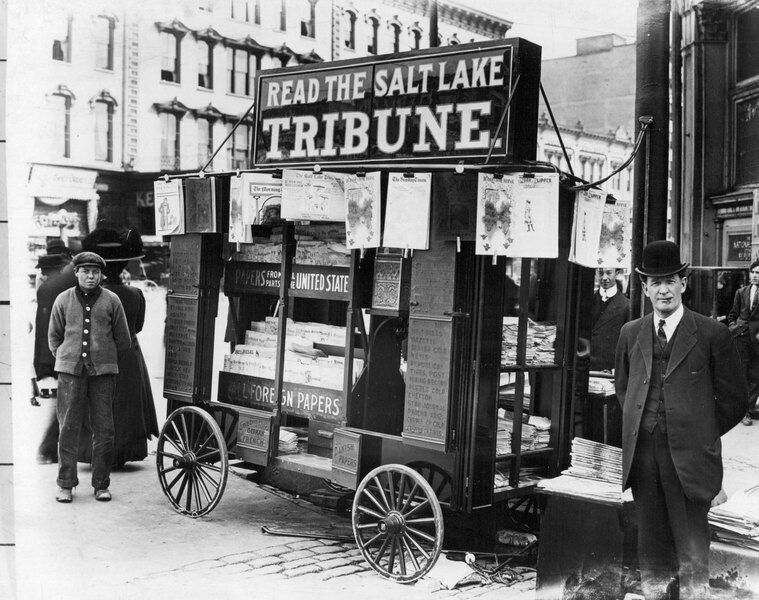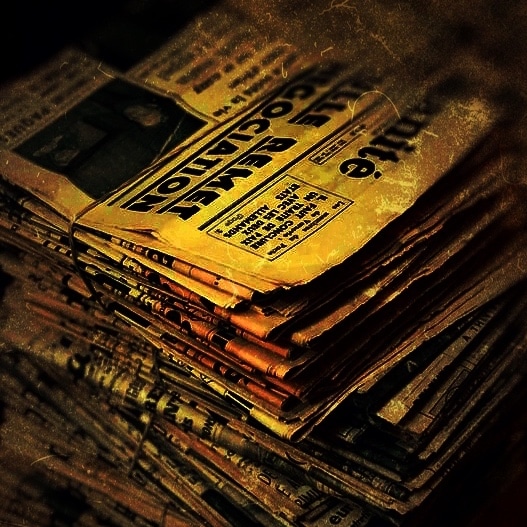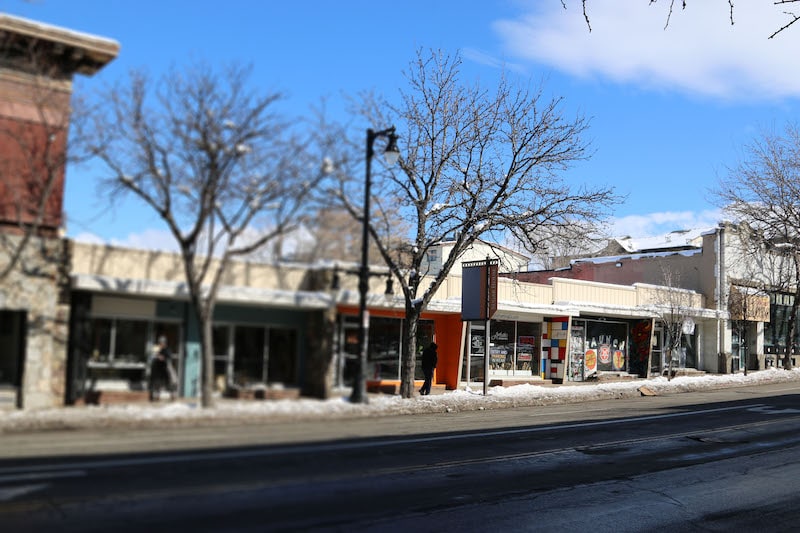“The newspaper is the first rough draft of history.” — Philip Graham
When Utah was just a territory and the Transcontinental Railroad was not yet complete, news was a priceless commodity to the pioneer inhabitants who needed a connection to the rest of the country and the world.
Alone in an inhospitable place, news from anywhere was a welcome respite from the isolation the early settlers must have experienced as strangers in a strange land.
Realizing the need to maintain contact with a distant but expanding nation, Brigham Young established the region’s first newspaper.
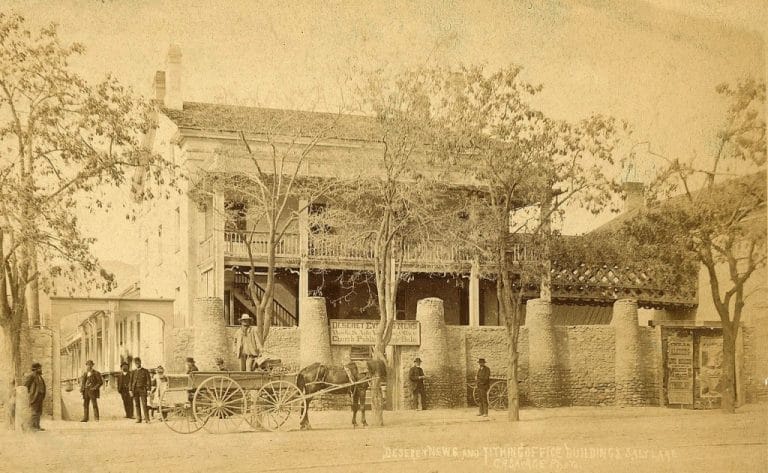
Owned by Utah’s dominant religious institution, the LDS Church, the Deseret News offers general interest news filtered through a conservative agenda of family and faith. Known as “the Mormon paper,” the News began its run on June 15, 1850 as a weekly publication.
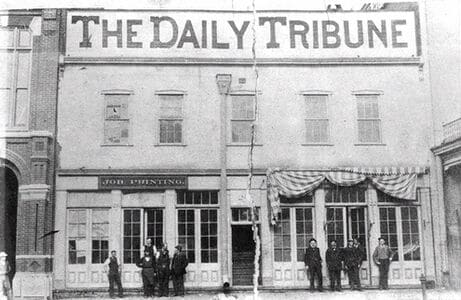
The Tribune, on the other hand, is “Utah’s Independent Voice,” delivering content to a more liberal and objective audience.
The first issue was published on April 15, 1871, with this declaration: “The Daily Tribune will be a purely secular journal devoted entirely to the presentation of News and to the development of the Mining and Commercial interests of the Territory. It will have no sectarian bias and will be the organ of no religious body whatever. The aim of the publishers will be to make it a Newspaper in every sense of the word.”
“Were it left to me to decide if we should have a government without newspapers, or newspapers without a government, I should not hesitate a moment to prefer the latter.” — Thomas Jefferson
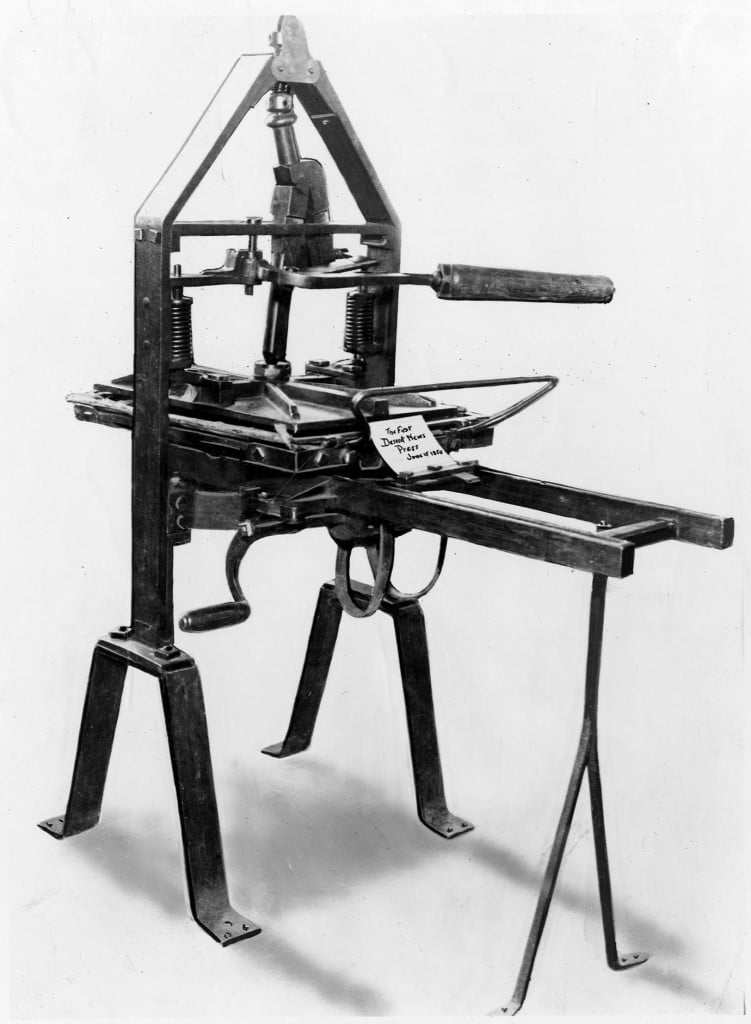
Editorial branding aside, these two venerable giants went head to head for decades, with The Salt Lake Tribune as a morning paper and the Deseret News as an evening paper. As joint entities of the Newspaper Agency Corporation (NAC), they ran on the same press, although they maintained separate newsrooms.
In 2000, attempts by the LDS Church to purchase the NAC was perceived by many as an attempt to silence the independent voice of the Trib, which was seen as secular threat to the church-owned Deseret News.
In addition, evening papers fell out of favor and the News lost subscribers to the more relevant Tribune. In 2014, the NAC, now known as Digital First, effectively cut the Tribune’s operating budget in half in an attempted acquisition scheme that was sent to the Justice Department for review under the Newspaper Preservation Act.
An article in the Salt Lake Tribune on April 22, 2014 stated that, “In a set of revisions last October to the six-decades-old joint-operating agreement between the two newspapers, Digital First sold The Tribune’s share of formerly co-owned printing facilities in West Valley City and gave the News a 3-to-2 majority on the board governing the partnership. More crucially, the revisions gave the News 70 percent of the papers’ pool of profits, compared to 30 percent for The Tribune.”
The Trib has undergone six ownership changes since 1997—the most recent being its acquisition by Paul Huntsman, son of the late billionaire philanthropist Jon Huntsman Sr., in 2016.
Whereas competition is usually a good thing, the dispute between these two media giants continues to be the biggest in Utah newspaper history, and has forced The Tribune to seek creative ways to stay afloat.
“The newspaper is a greater treasure to the people than uncounted millions of gold.” — Henry Ward Beecher
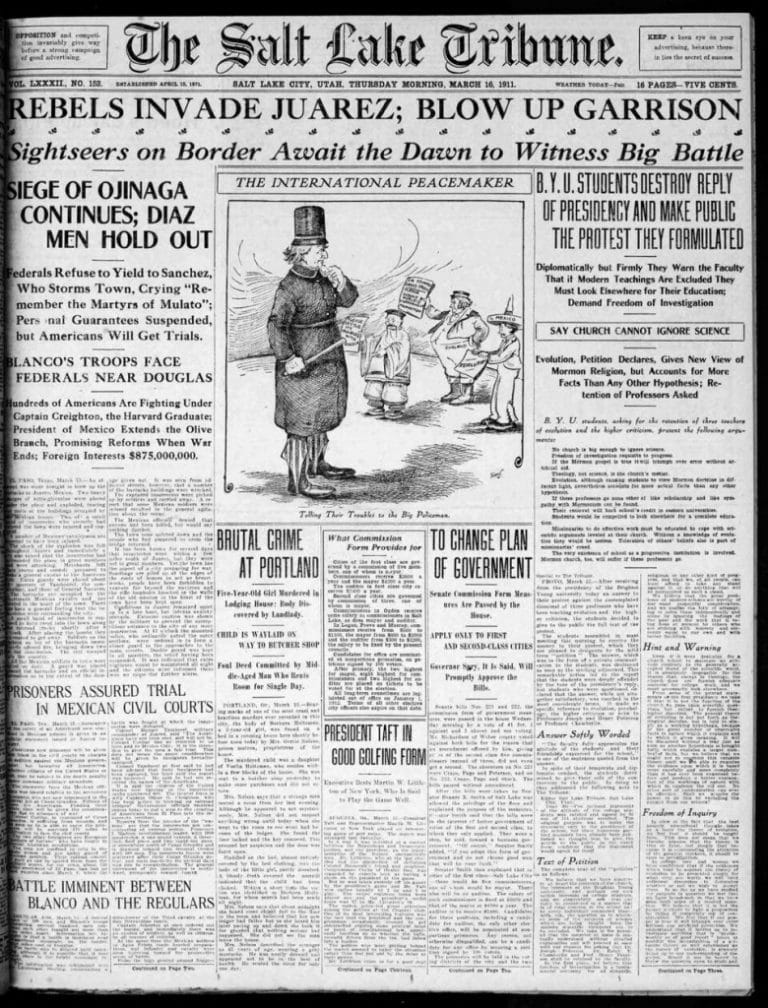
As Mormon expansion continued, communities sprung up throughout the territory and nearly every new settlement had its own newspaper. From the American Fork Citizen to the Weber Herald, newspapers were a staple of Utah society in the late 1800s.
By the time Utah attained statehood on January 4, 1896, there were nearly 600 newspapers being printed throughout the state. At one time, Salt Lake County alone had 35 papers.
Hailing from towns large and small, with masthead names such as Banner, Examiner, Globe, Leader, Bugler, Clarion, Chronicle, and Advocate, newspapers were thriving. Journalism and a free press, also known as The Fourth Estate, were alive and well in frontier Utah.
Reading the morning paper was as much a part of breakfast as bacon and eggs.
“All I know is what I read in the papers.” — Will Rogers
Even though all news is slanted and all reporters have bias, early newspapers were built upon pillars of trust and readers could reasonably assume that they were being told the truth—even if it was often presented in flowery Victorian prose.
The digital era changed not only the way people read newspapers; it changed our very perception of news, and where, how, and why we choose which news to read and even which news we choose to believe.
Recently, accusations of “Fake News” have made knowing which news sources to trust more difficult, partly because all news outlets, print and digital, are owned by only six media conglomerates that decide what news we hear. Information wars, 24-hour news cycles, and competition for advertiser dollars have reduced once-reputable news icons to pandering pundits who alternately spew a mix of truth, opinion, and vitriol with equal fervor, making it impossible to tell where news ends and propaganda begins.
Flatulent talking heads appeal to viewers’ emotions or lure the distracted by sensationalizing every story, even the weather, to get our attention. In our quest for fact-based content, we should never rely on a solitary news source, especially those with a single, obvious slant.
“Every time a newspaper dies, even a bad one, the country moves a little closer to authoritarianism…” — Richard Kluger
Newspapers today are in decline nationwide. Subscription rates have fallen to unsustainable levels as people abandoned hard-copy papers for digital versions, or as they started gleaning information from non-news sources such as Facebook and other social media sites.
Despite attempts at sabotage by the Deseret News, The Salt Lake Tribune, in an attempt to preserve community journalism, is poised to become the nation’s first endowed nonprofit 501(c)(3) metropolitan newspaper by 2020, although, after 148 years, it may no longer appear in printed form.
The days of the frontier newspaper are gone forever, and the days of newsprint may not be far behind. The future will be poorer because of it.
Check out more informative, compelling, and just awesome stories at Utah Stories.

